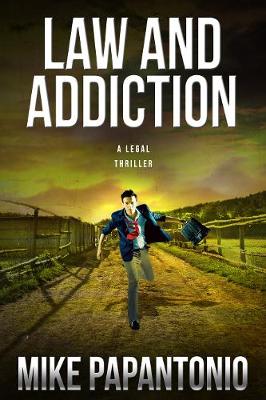
Heather
I was interested in reading Law and Addiction because I work in a town that has been hit hard by the opioid epidemic. Every week I read the local paper purely for the police blotter. In between the entertaining tales of some really stupid criminals there is report after report of officers treating overdoses. I find it interesting to see how many dose of naloxone they need for each person. The record I've seen so far is 14 doses. (That person then woke up and refused all other medical treatment.) So when this book describes the cost to towns of treating all these addicts and overdoses I understand what it is talking about.
I've also had a few people bring their dogs in who they claim are on mega doses of tramadol for their arthritis. Usually an in-depth conversation about alternatives to controlled medication and a discussion of the dispensing schedule we will have them on to make sure they aren't getting too many means we never see those people again.
In the middle of reading this book I actually had to put it down to go pick up some opiates from a pharmacy. The husband had had surgery and was prescribed opiates even though it was fairly minor. He took some prescription NSAIDS and iced the area and did well. Opiates were a bit of overkill in this instance. (He asked how we were going to get rid of them. I said I'd take them to work. He slowly questioned again, "What are you going to do with them?" Yeah, he knows the town I work in. "Getting rid of them" there can be interpreted a few ways. For the record, I am going to put them in the Drug Destroyer solution.)
On the other hand, my doctor side comes out and I don't really want more regulation on access to them by doctors for people (and animals) who really need them. They have a place in medical care. Proper dosing and monitoring are the key.
Down the street from my house there is a place with a chalkboard in the front lawn with a running total of people who died from overdose in the city since they started keeping count. I think they are in the 600s.
All of that means that I can relate to the setting for this story. Jake is a new lawyer who has lost his twin brother to an overdose. He decides to try to get local governments to let him sue pharmacy companies on their behalf for the cost of treating the addiction crisis.
The book does a good job explaining the various causes and effects of the problem. Some of them I hadn't thought of before. I hadn't tied together economic collapse due to decreased business in affected communities with the ability for other people to buy up real estate cheaply potentially leading to gentrification and large profits.
A lot of this book consists of lawyers sitting around and discussing how they are going to build their case. It is a lot of exposition. That is interesting if you want to see how people put these kinds of large cases together. It is also how you get the information about how opiates came into these towns and what it causes. I think this book works as an educational piece but it doesn't really work as a thriller for me. There is a bit of mystery but it never really gets intense and "can't put it down." Use this as primer on opiate addiction and the economic effect on towns more than a nail biting story.
This review was originally posted on Based On A True Story
